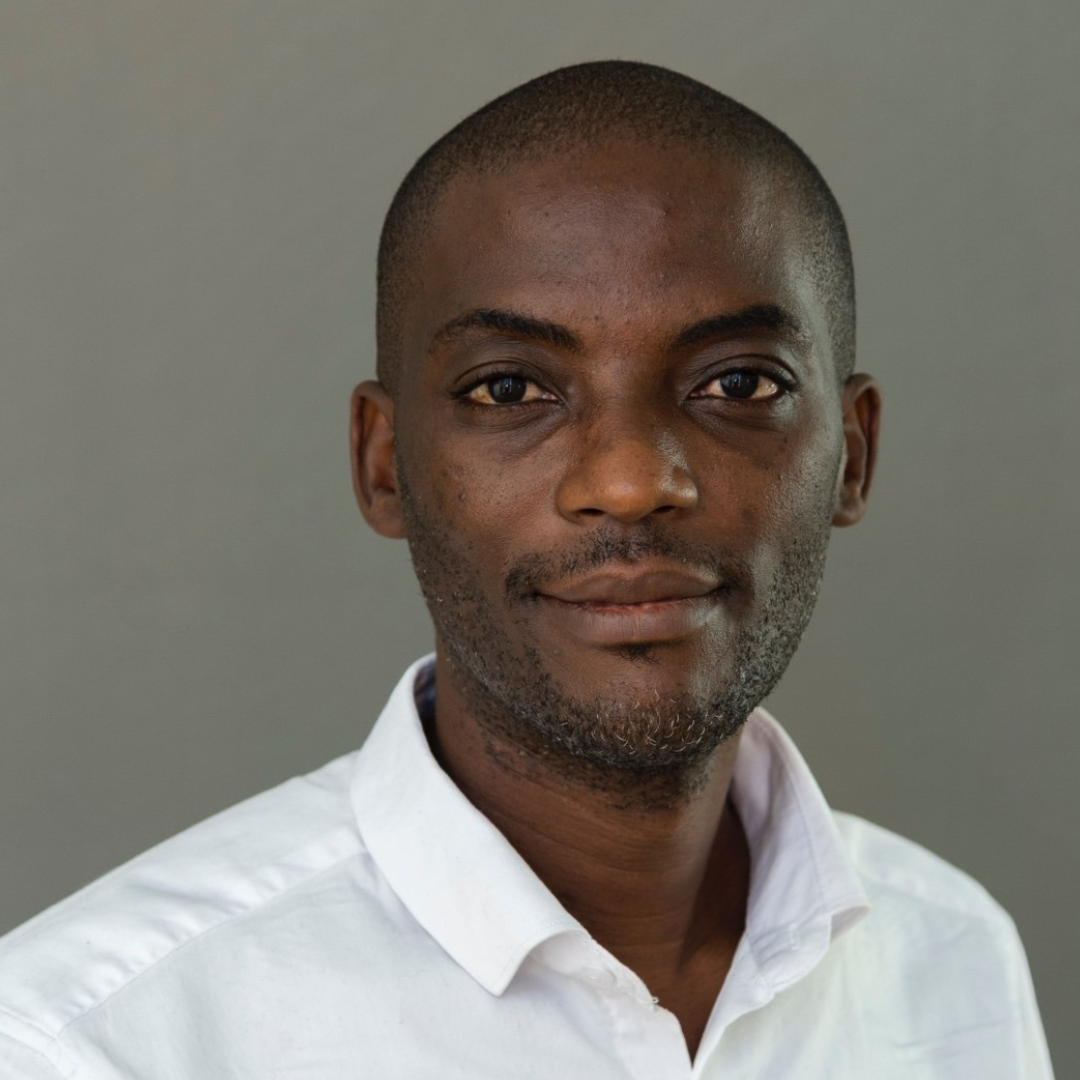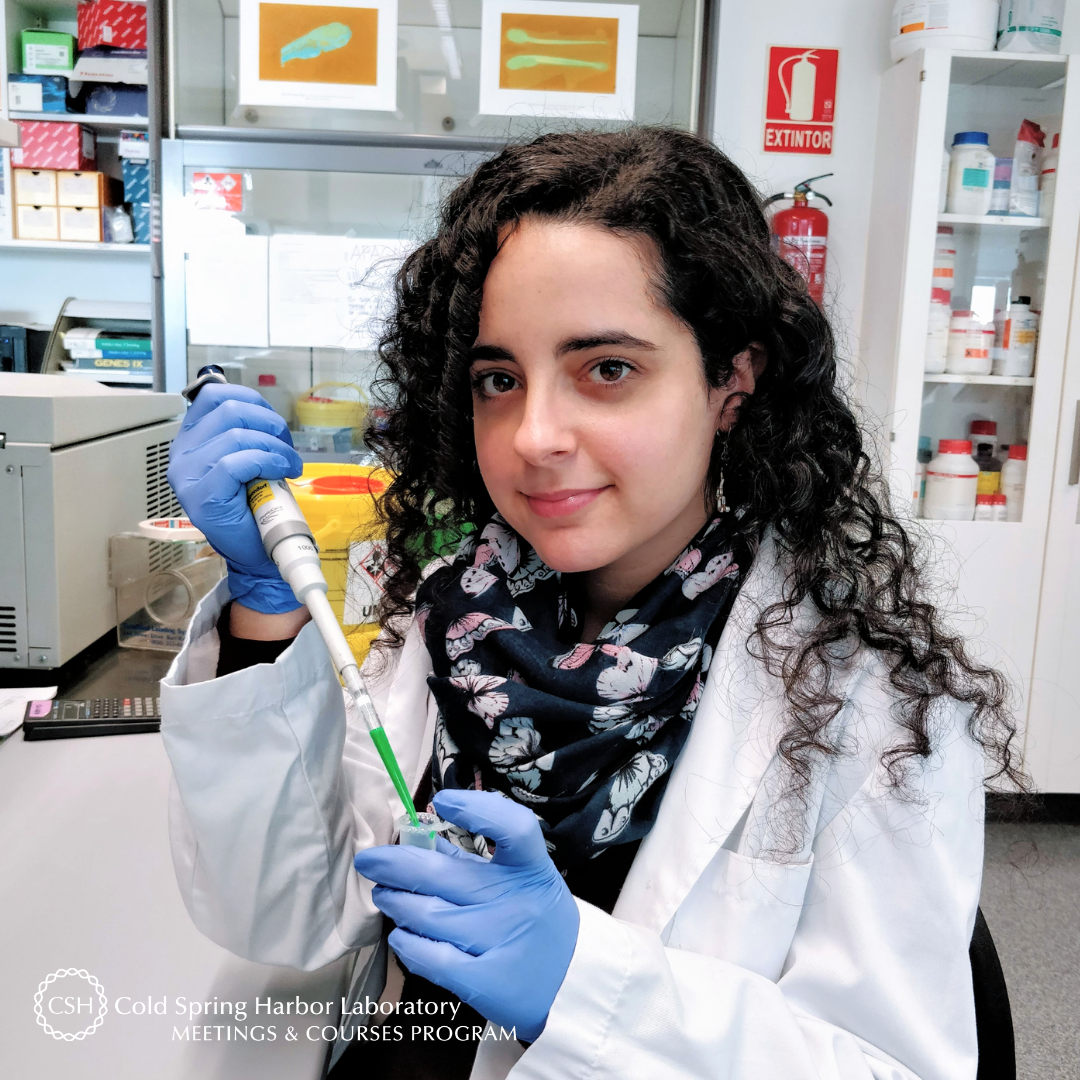Meet Abigail Sarah Jarosz of Bowling Green State University! The third year PhD student and member of Dr. Julia Halo’s lab returned for another CSHL Retroviruses meeting where she again gave a poster presentation titled “Expression and fusogenic function of a CfERV lineage in canines”.
Tell us about your research.
I study copies of once-infectious retroviruses that arose from germline infection known as endogenous retroviruses (ERVs), which act as a ‘fossil record’ of past infections providing a unique resource to examine virus-host evolution. I believe these fossils in the canine host may be the key to understanding why there appears to be no circulating retroviruses in any modern canids.
How did you decide to focus on this area/project?
Despite their being constantly challenged from numerous exogenous retroviruses, retroviral infection has not been observed in the domestic dog or any contemporary canid. This truly boggles my mind and I hope to help characterize what this purging mechanism is and how it has evolved.
What and/or who is the inspiration behind your scientific journey?
When I started high school, my family got a Golden Retriever named Sammy. We had a very close relationship through thousands of hours spent walking, cuddling, and of course, playing ball. Sammy solidified my love for dogs (although I love all dogs, he was the very best) and motivates me to work on my research. I will always be grateful for the time we had together.
Where do you see yourself in five years?
To be honest, I am not exactly sure where I see myself in five years. I do know I will continue to do research and ask questions that, when answered, will help expand our understanding of life.
What do you love most about being a researcher?
I love being able to explore science and how I am always learning new things. I am lucky to have an advisor who is extremely supportive of me and encourages the exploration of different research avenues.
What drew you to attend this meeting?
With my research, understanding retroviruses and the subsequent host response is essential. This meeting covers many of the different components that make up my project.
What is your key takeaway from the Meeting; and how do you plan to apply it to your work?
In the question of why canines are elusive to retroviruses, I just started to get into restriction factors. This meeting presented some amazing new research that I can learn from while I begin to characterize restriction factors in canines.
What feedback or advice would you share with someone considering to participate in this meeting?
My advice to anyone considering participating in this meeting is to ask questions and seek out some research that may not appear to be in your “area”. Both of those things are the best way to learn, meet new people, and think about your own project from a different perspective.
What’s the most memorable thing that happened during the Meeting?
So far, I would say that the most memorable part of this meeting has been the poster sessions. It is always amazing to see all the cool research people are working on. I am also very excited for the talks this Friday during the ERVs and Pathogenesis session -- it looks like a great line up of talks!
What and/or who is the inspiration behind your scientific journey?
When I started high school, my family got a Golden Retriever named Sammy. We had a very close relationship through thousands of hours spent walking, cuddling, and of course, playing ball. Sammy solidified my love for dogs (although I love all dogs, he was the very best) and motivates me to work on my research. I will always be grateful for the time we had together.
Where do you see yourself in five years?
To be honest, I am not exactly sure where I see myself in five years. I do know I will continue to do research and ask questions that, when answered, will help expand our understanding of life.
What do you love most about being a researcher?
I love being able to explore science and how I am always learning new things. I am lucky to have an advisor who is extremely supportive of me and encourages the exploration of different research avenues.
What drew you to attend this meeting?
With my research, understanding retroviruses and the subsequent host response is essential. This meeting covers many of the different components that make up my project.
What is your key takeaway from the Meeting; and how do you plan to apply it to your work?
In the question of why canines are elusive to retroviruses, I just started to get into restriction factors. This meeting presented some amazing new research that I can learn from while I begin to characterize restriction factors in canines.
What feedback or advice would you share with someone considering to participate in this meeting?
My advice to anyone considering participating in this meeting is to ask questions and seek out some research that may not appear to be in your “area”. Both of those things are the best way to learn, meet new people, and think about your own project from a different perspective.
What’s the most memorable thing that happened during the Meeting?
So far, I would say that the most memorable part of this meeting has been the poster sessions. It is always amazing to see all the cool research people are working on. I am also very excited for the talks this Friday during the ERVs and Pathogenesis session -- it looks like a great line up of talks!
Thank you to Abigail for being this week's featured visitor. To meet other featured researchers - and discover the wide range of science that takes part in a CSHL meeting or course - go here.
Images provided by Abigail Sarah Jarosz































